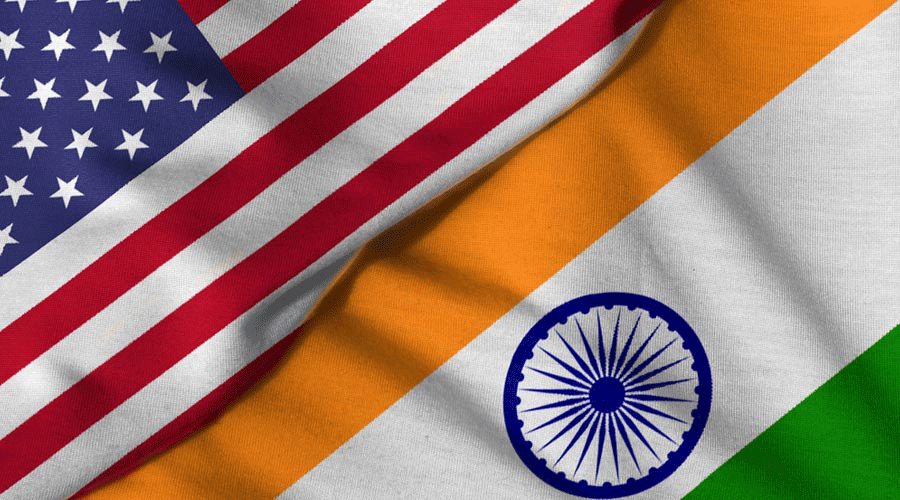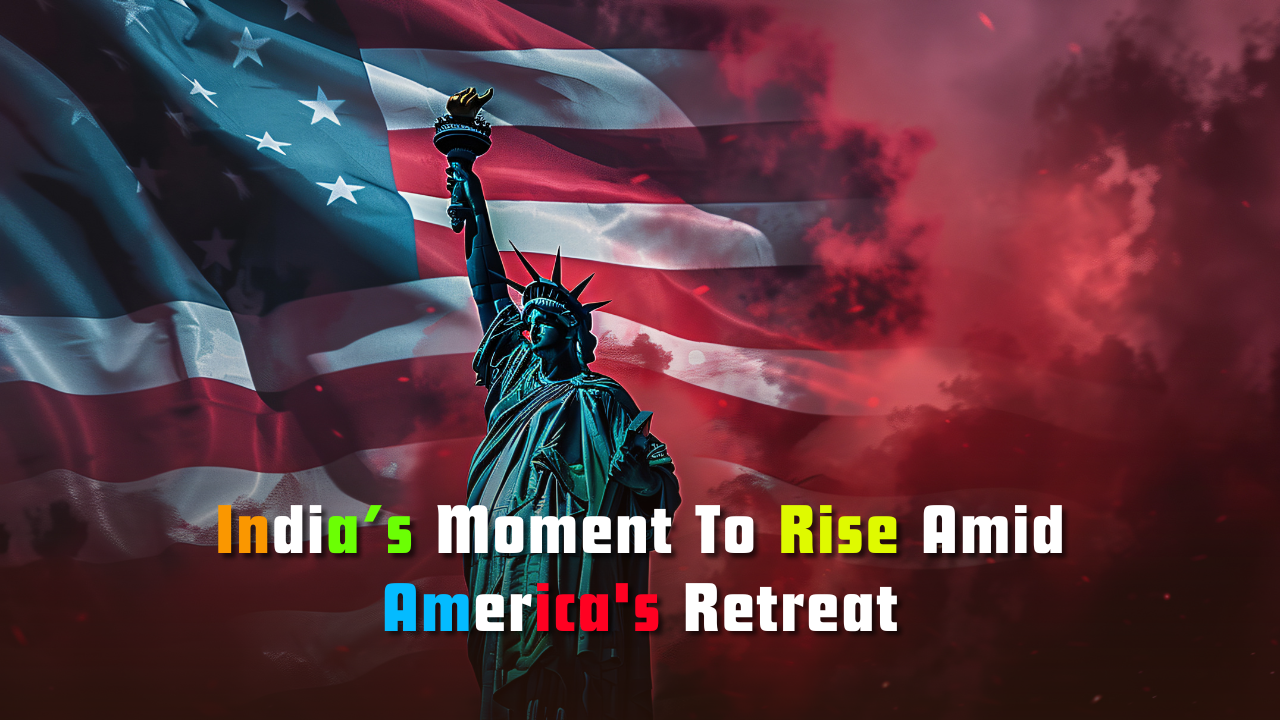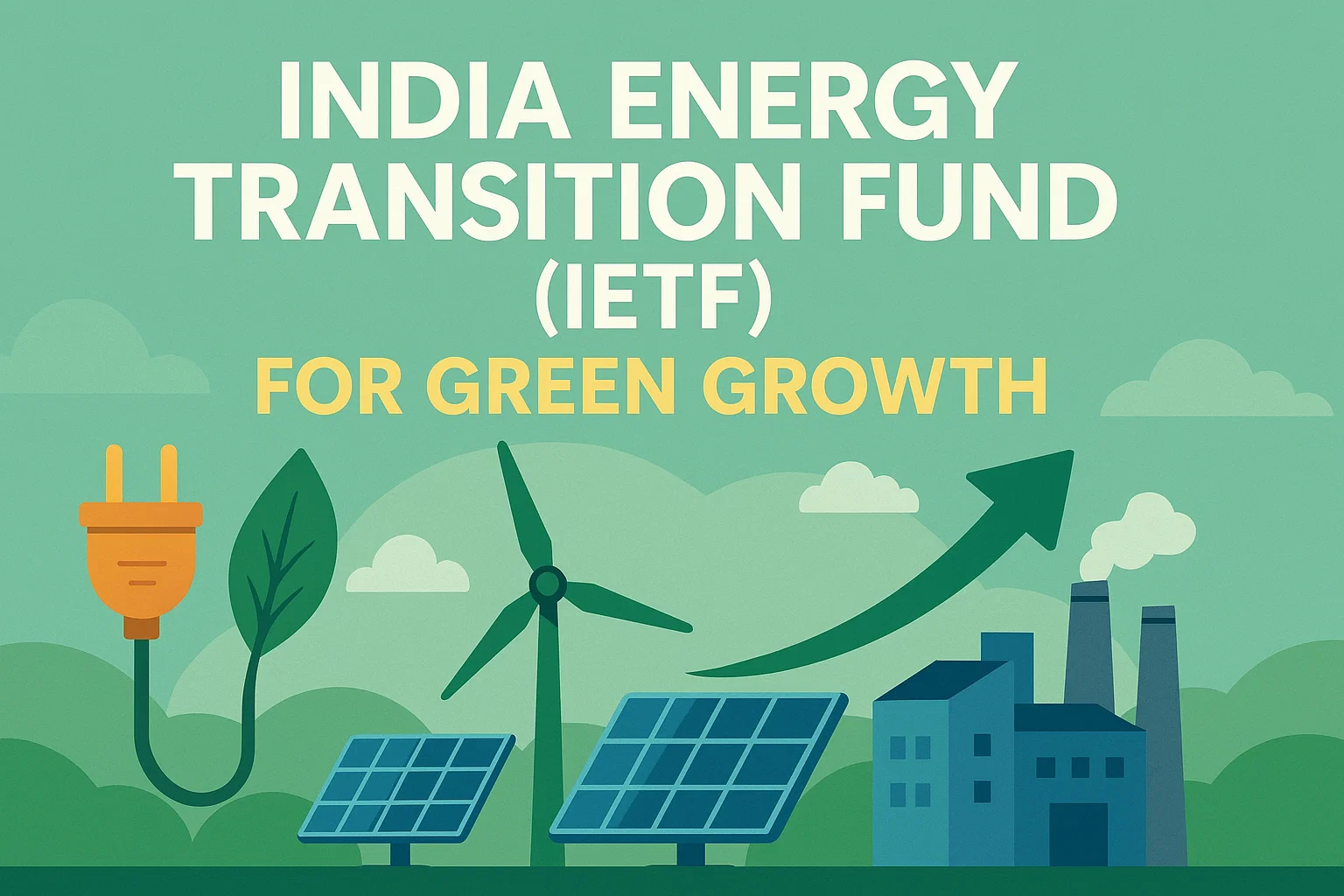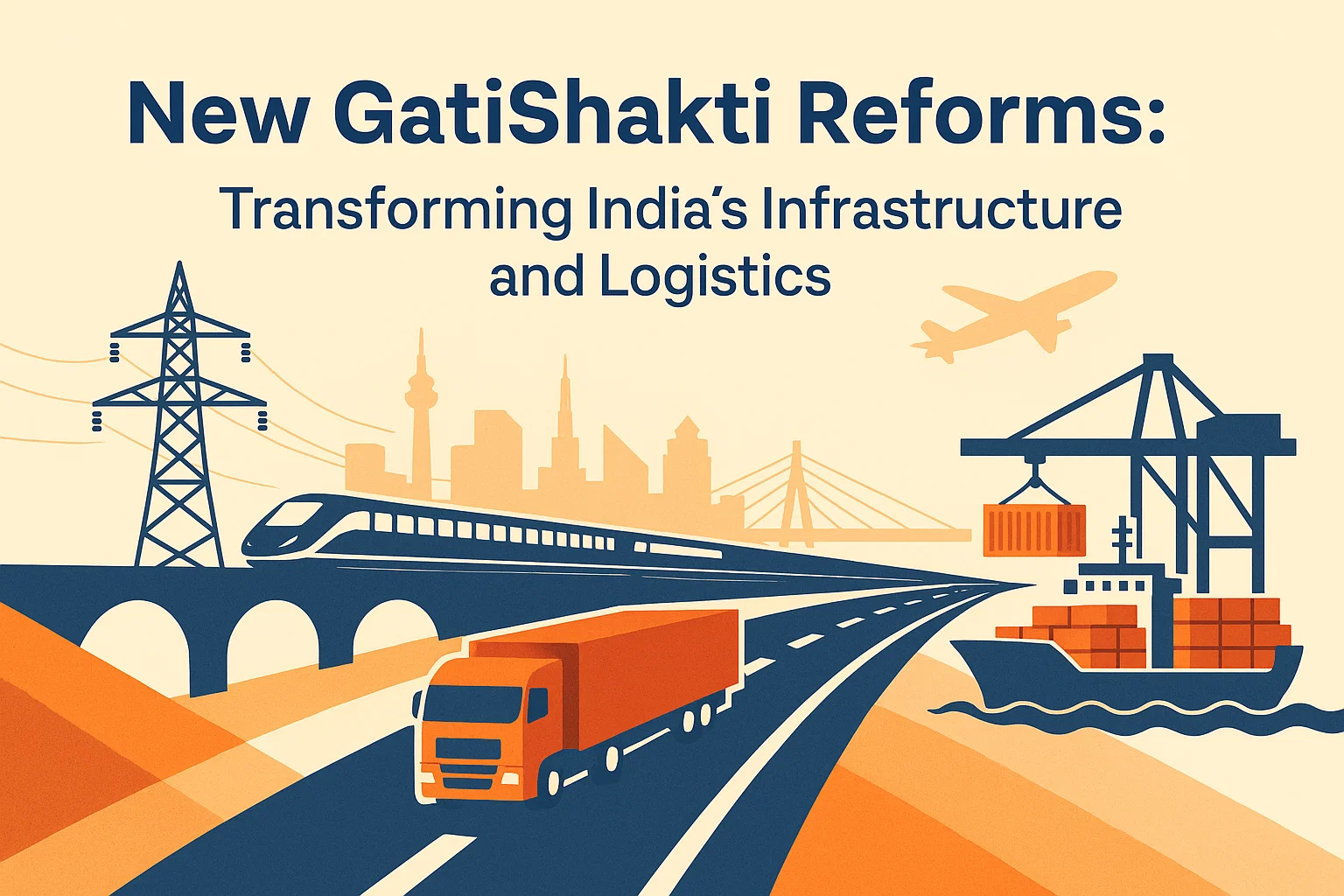India’s Moment Amid America’s Retreat
As America withdraws from global leadership, India faces a rare chance to rise. This article explores U.S. policy shifts and how India can respond with urgent reforms to attract talent, boost manufacturing, and lead globally.

Introduction
When the United States changes its policies on universities, businesses, supply chains and immigration, the effects reach far beyond its borders. For India, these US reforms bring short‑term hardship but also long‑term promise. As America withdraws from international engagement, global education, trade and migration all feel the impact. India now faces a clear choice: it can remain passive and suffer the consequences, or it can act decisively to turn disruption into opportunity.
Manish Sabharwal, in his Indian Express column titled “America is going back on all the things that made it great. India’s must seize the opportunity” (11 July 2025), warns that these American policy shifts—targeting universities, companies and immigration—could signal the end of Pax Americana. He stresses the “fierce urgency of now” and urges India to respond with deregulation, decentralisation and full autonomy for its universities. Sabharwal argues that India must shed its outdated constraints and embrace bold reforms. The risk of failure is real, but so is the opportunity: if India acts swiftly, it can chart its own course on the global stage.
Drawing on Sabharwal’s analysis, this essay will explain how US changes affect India, outline the immediate impacts, consider the long‑term possibilities, and propose urgent reforms that can enable India to emerge as a confident global leader.
Waning University Power
For many decades, American universities were at the top of global academia. These institutions produced around half of all Nobel Prize winners and received massive public funding. For example, the National Institutes of Health helped develop almost every new drug approved in the last ten years. American campuses were magnets for students from across the world. Tens of thousands of Indian students attended U.S. universities, and many of them became scientists, businesspeople and thought leaders.
Recent years have brought strong criticism of American higher education. Some people say that universities are too ideological or too expensive. Others want to cut public support or reduce international student visas. These trends threaten American higher education and reduce opportunities for Indian students who want to learn and innovate in the United States.
Global Supply Shift
From Silicon Valley to Wall Street, American companies have thrived by embracing worldwide trade. Tech giants and pharmaceutical firms built supply chains across many countries. Their ability to move manufacturing to places like China helped bring down costs, created millions of jobs and raised living standards in poor countries. Apple’s factories in China are a prime example; they taught new skills, trained local managers and lifted many people out of poverty.
Now, American leaders are pushing back. They want to bring jobs home, apply tariffs and review foreign investments more strictly. These moves disrupt global networks. They increase costs and make business planning harder. India could be hit—especially exporters and factory owners—since India entered the manufacturing boom later than China. At the same time, as American firms hesitate to invest in China, they may look elsewhere. India could become the new destination for global manufacturing—if it is ready.
Immigration Vital Force
Immigration has long been a key part of American success. Nearly one quarter of people in the United States are immigrants or their children. Many of them—especially those from India—have contributed heavily in science, engineering, business and education. Remittances from Indian professionals in America are a significant source of income for families back home.
However, American political rhetoric is growing more restrictive. Visa rules are tightening. There is a rise in nativism and xenophobia—a disdain for outsiders. The message is getting unwelcome for skilled migrants. If fewer Indians can move to the U.S., fewer students will go and fewer skilled workers will connect the two economies. This threatens the brain circulation that has benefited both nations.
Short‑Term Pain for India
India is already feeling the initial consequences. First, families that count on money sent from relatives working in America may receive less. Second, Indian students will face more difficulty in gaining visas and work permits. Third, exporters and manufacturers in India will feel the strain if supply chains become unstable. Fourth, Indian companies that rely on American investors or markets may pause expansion due to increasing uncertainty.
This unpredictability is more than an economic worry. Fixed plans are now riskier. Long-term investment decisions are being delayed. India’s growth strategy—closely tied to an open and innovative global economy—is suddenly under threat. The strategic partnership with the United States, once a pillar of India’s international plans, is becoming less steady.
Long‑Term Chance for India
Every crisis contains potential reward. As America pulls back, a space is opening for India. This could be India’s time to act decisively and claim a stronger position in the world.
Attracting Global Talent: If the United States draws in its borders, India can become more inviting. By reforming its higher‑education system, offering more research funding and easing paths for foreign talent, India could turn into a magnet for scholars and innovators. Institutions such as the Indian Institutes of Technology (IITs), Indian Institute of Science (IISC) and Ashoka University are already well-known. If their autonomy is enhanced, they could compete with the best universities worldwide.
Becoming a Manufacturing Hub: As global production moves away from China, India has a once-in-a-generation chance to build industries. But India needs better infrastructure, simpler labour rules, faster land acquisition and skilled workers. If these improvements are made, India could attract so-called “factory refugees” fleeing China—boosting employment and economic growth.
Projecting Global Influence: America’s global authority is loosening. China is rising, but its authoritarian style and lack of moral appeal discourage some countries. India, by contrast, is democratic, diverse and dynamic. By strengthening ties with other democracies and asserting its values, India can shape global institutions and agendas.
Reforms and Parterships
To seize these uplifts, India must move quickly—its reforms must be bold. Gradual change will not be enough.
Deregulation: India’s business environment is held back by excessive rules. Licences, approvals, audits and penalties slow firms down. Start‑ups face heavy bureaucratic burdens. By cutting red tape and making business law simpler, India can unleash the innovation of its people. It is not merely about improving rankings—it is about unleashing creativity.
Decentralisation: Many powers are still locked in Delhi. India’s federalism remains only partly real. If states and cities are given money, legal authority and staff, they can tailor policies to local needs. Examples like Bengaluru’s tech scene or Gujarat’s industry show how local rule leads to better results.
University Autonomy: IITs, IISC, IIMs and Ashoka need full freedom—including budget control, staff appointments and course design. Giving them such self‑rule (poorna swaraj) would accelerate improvement and global competition. These reforms would raise India’s standing in global university rankings and research influence.
Strategic Partners
It may be tempting to wish for American decline—but that would be a strategic mistake. The United States is still India’s strongest partner for education, migration, investment and trade. If U.S. research funding dries up, it is hard to imagine the same intensity being replicated in India soon. America may be faltering, but it still leads in many key areas.
China, the other global power rising rapidly, is deeply authoritarian. Its global model of influence—through pressure and diplomacy—may not be acceptable to many countries. India must balance deeper engagement with the U.S. while building its own capacities and leadership. It must strengthen ties with democratic nations and enhance its global voice.
Conclusion
American policies on universities, supply chains and immigration are causing immediate difficulties for India. Families, students, businesses and workers all face challenges. However, these events also offer India a chance to step forward. By reforming business laws, empowering local governments and granting autonomy to its premier universities, India can attract global talent, build industries and take its place on the world stage. India must act with urgency. The era of hesitation is over. The era of Indian leadership has begun.
Subscribe to our Youtube Channel for more Valuable Content – TheStudyias
Download the App to Subscribe to our Courses – Thestudyias
The Source’s Authority and Ownership of the Article is Claimed By THE STUDY IAS BY MANIKANT SINGH





